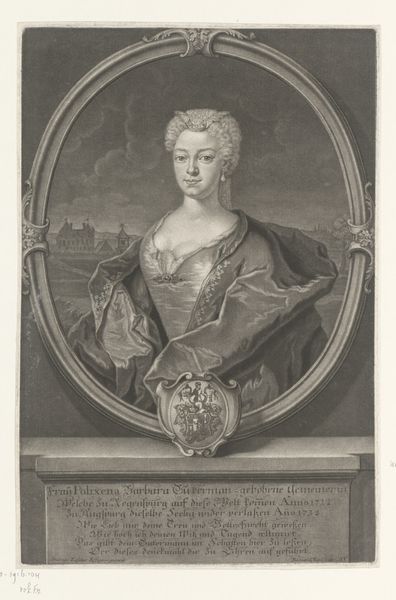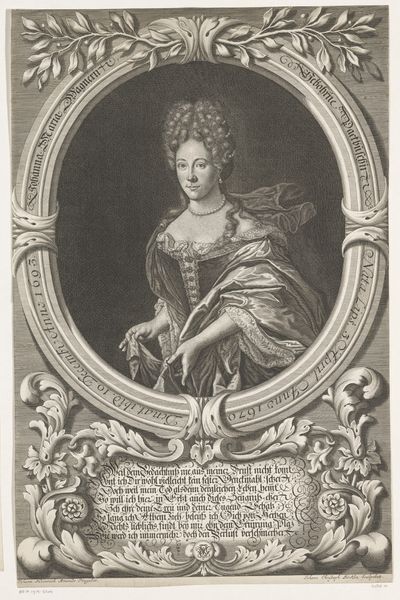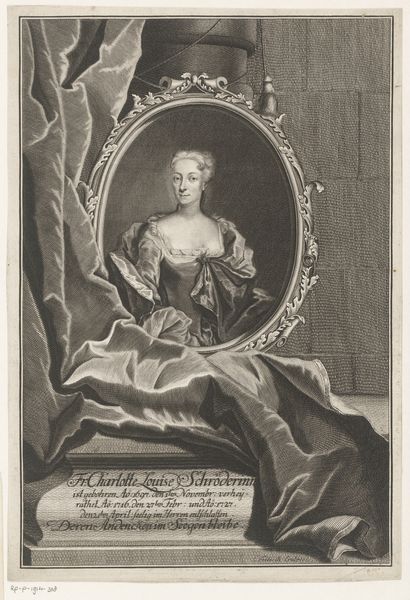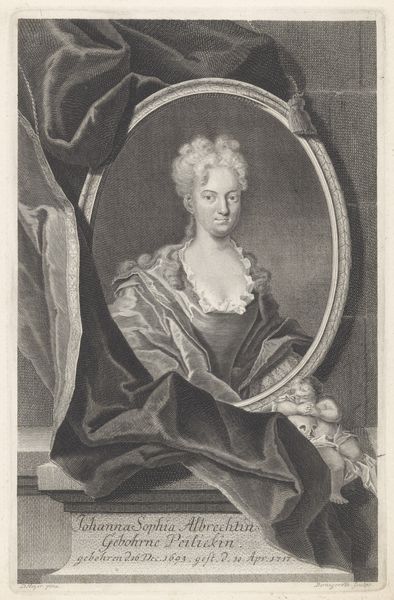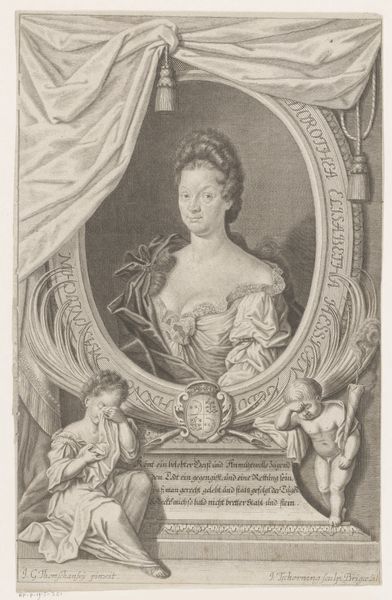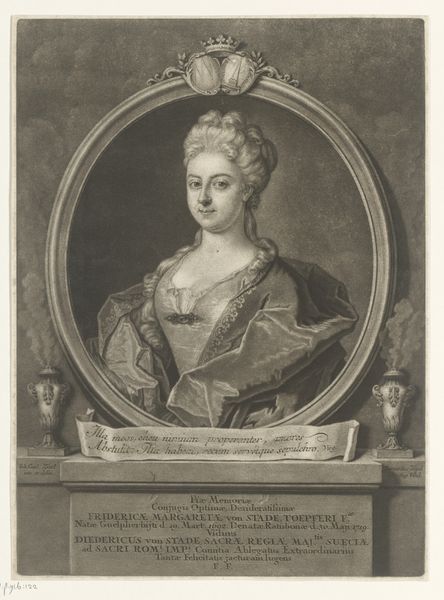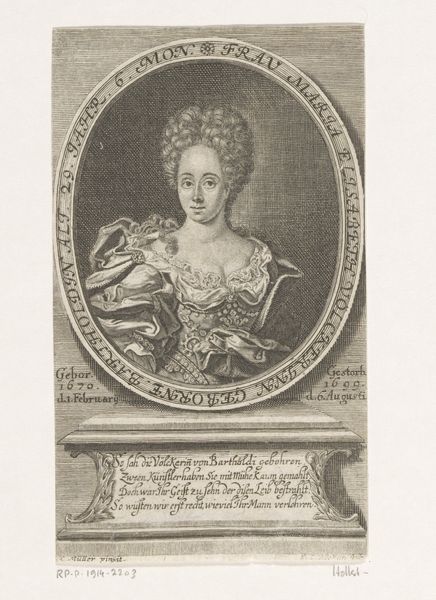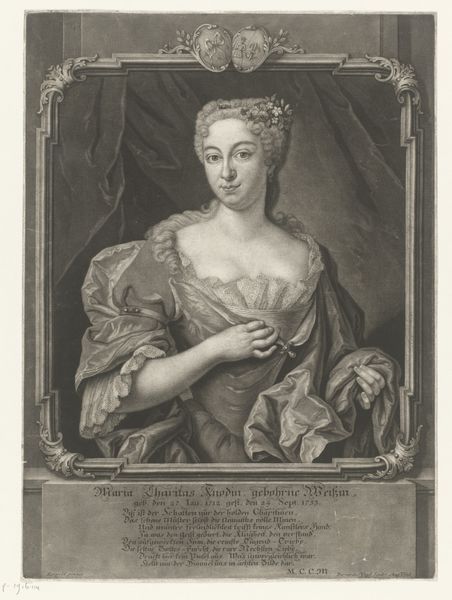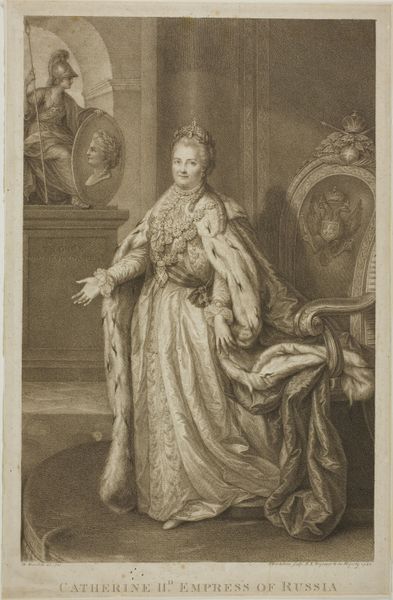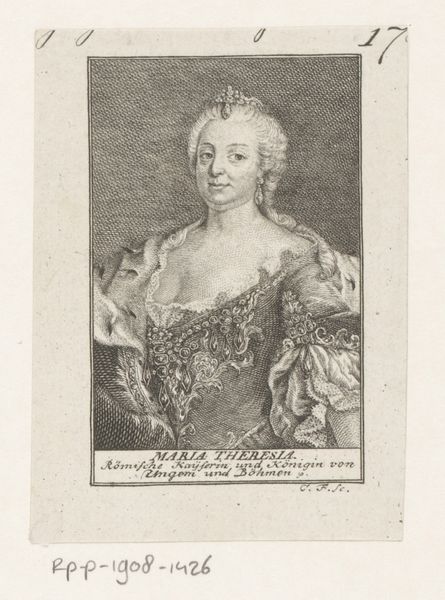
engraving
#
portrait
#
baroque
#
old engraving style
#
history-painting
#
engraving
Dimensions: height 315 mm, width 198 mm
Copyright: Rijks Museum: Open Domain
Curator: Here we have a fascinating Baroque engraving, "Portret van Sophie Charlotte Luise von Plato," created sometime between 1715 and 1732 by Johann Georg Beck. The print is housed right here in the Rijksmuseum. Editor: The first thing that strikes me is the sitter's rather inscrutable gaze—there’s an ambiguity there, isn't there? Framed by that elaborate oval, draped with heavy fabric. It suggests both prominence and perhaps a kind of confinement, especially given the very linear, structured technique. Curator: The artist certainly knew how to render texture! Notice the contrasts – the smooth skin of the face against the detailed rendering of the lace and heavy fabric, achieved with only line and shading. Semiotically, these details act as identifiers, communicating social position and perhaps even personal traits. Editor: Indeed. Sophie Charlotte's presentation is undoubtedly elevated, but consider what such representation excludes. Whose story *isn’t* being told here? The people who enabled her lavish lifestyle, perhaps. It speaks volumes about power dynamics during the Baroque period and what stories are valued. Curator: But within those very visual codes, Beck displays his skill. The density of the engraving marks generates the folds of fabric and the sitter’s garments, with a skillful manipulation of depth using chiaroscuro. This emphasizes volume and spatial relations on a relatively flat surface. The heraldic symbols could refer to connections with imperial lineage, indicating dynastic aspirations or relationships, and of course status. Editor: I think a key take-away from analyzing such work is that visual luxury and social structures are always entwined. Looking at this portrait as more than mere art requires one to decode these power dynamics and acknowledge that even within fine artistic construction there exist questions of inequality and absent voices. Curator: You offer such valuable historical contexts! For me, close study reminds me that the technical elements create certain qualities for conveying visual codes and signs, reflecting its contemporary aesthetic concerns. Editor: Well, maybe that aesthetic deserves scrutiny after all!
Comments
No comments
Be the first to comment and join the conversation on the ultimate creative platform.
